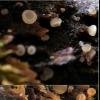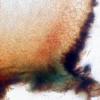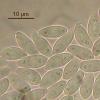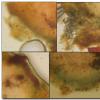
08-11-2025 00:29
 Francois Guay
Francois Guay
I found this species in Quebec, Canada, on herbace

04-11-2025 09:07
Hello.A suspected Hymenoscyphus sprouting on a thi

04-11-2025 12:43
 Edvin Johannesen
Edvin Johannesen
Hi! One more found on old Populus tremula log in O

03-11-2025 21:34
 Edvin Johannesen
Edvin Johannesen
These tiny (0.4-0.5 mm diam.), whitish, short-stip

28-10-2025 15:37
Carl FarmerI'd be grateful for any suggestions for this strik

03-11-2025 16:30
 Hans-Otto Baral
Hans-Otto Baral
Hello I want to ask you if you have found this ye
Discomycet on cone of Picea
Gernot Friebes,
11-04-2009 08:24
a few days ago I found this Ascomycet on a cone of Picea. When getting old the apothecia turn reddish-brownish. Asci are IKI b and the spores are 9-10 x 3.5-5 µm. The apos are sessile. I thought maybe a Calycina but I did not found a species that fits with my collection.
Best wishes,
Gernot
Gernot Friebes,
11-04-2009 08:27
Hans-Otto Baral,
11-04-2009 17:47

Re:Discomycet on cone of Picea
The ascus apical ring looks more like Hymenoscyphus, so Calycina seems excluded. I think it is Hymenoscyphus ravus, though there the spores are a bit smaller (*6-8 x 2.8-3.5). A very similar but apparently distinct species, "Ciboria" rava, has spores which better fit to yours, but that is on catkins of Betula.
Is the width of 5 µm perhaps a bit too high? Do you have a scvale to your microphotos?
Zotto
Is the width of 5 µm perhaps a bit too high? Do you have a scvale to your microphotos?
Zotto
Gernot Friebes,
11-04-2009 21:29
Re:Discomycet on cone of Picea
Hello Zotto,
I looked at the spores again (dried, rehydrated material) and this time they were up to 11 µm long and 4,5 µm broad. I have no scale to my microphotos but tomorrow I can try to make a photo through the ocular, if necessary. What next?
Best wishes and many thanks,
Gernot
I looked at the spores again (dried, rehydrated material) and this time they were up to 11 µm long and 4,5 µm broad. I have no scale to my microphotos but tomorrow I can try to make a photo through the ocular, if necessary. What next?
Best wishes and many thanks,
Gernot
Hans-Otto Baral,
12-04-2009 10:26

Re:Discomycet on cone of Picea
This group is in bad need of a thorough study. Neither the genus is clear nor the species limits are well explored, in my opinion. Looking for croziers would be necessary, also measuring asci (now probably only in dead state), and a section of the excipulum (now difficult in the dead state). Only thorough documentation may help. It is not impossible, in my experience, that a species occurs on both Betula catkins and Picea cones.
Both Hymenoscyphus ravus and Ciboria rava were described by Svrcek 1989. Svrcek observed crystals in the excipulum of H. ravus which I never saw.
I send you the literature by email.
If you do not use the camera zoom for your microphotos, it is easy to make a scale which you can paste in every photo.
Zotto
Both Hymenoscyphus ravus and Ciboria rava were described by Svrcek 1989. Svrcek observed crystals in the excipulum of H. ravus which I never saw.
I send you the literature by email.
If you do not use the camera zoom for your microphotos, it is easy to make a scale which you can paste in every photo.
Zotto
Gernot Friebes,
12-04-2009 17:02
Re:Discomycet on cone of Picea
I checked my collection again: the asci have croziers, with 65-74 x 5-6 µm. The excipulum seems to be between a textura globosa and a textura angularis with elongated cells (like a textura prismatica) at the margin of the apothecia, without any crystals. I also took a photo where you can see the measuring scale and a spore with nearly 5 µm width.
The description of Ciboria rava by Svrcek (thanks for sending it to me!) seems to fit quite well except for the apothecia which he described as shortly stipitate but within mine collection the apothecia are sessile.
Best wishes,
Gernot
picture: section of an apothecium (above) and the excipulum (beneath)
The description of Ciboria rava by Svrcek (thanks for sending it to me!) seems to fit quite well except for the apothecia which he described as shortly stipitate but within mine collection the apothecia are sessile.
Best wishes,
Gernot
picture: section of an apothecium (above) and the excipulum (beneath)
Hans-Otto Baral,
12-04-2009 19:07
Hans-Otto Baral,
12-04-2009 19:10
Gernot Friebes,
12-04-2009 20:17
Hans-Otto Baral,
12-04-2009 20:32

Re:Discomycet on cone of Picea
o.k., this is not a final proof for imberbis, but supports my idea. Such blue reactions occur also in other taxa and are perhaps not very consistent. F.ex. there is a Pezizella amyloideoexcipulata Svrcek described on Fagus cupules with spores 6.5-11 x 2.3-3.2 µm, which seems close to H. imberbis.
Zotto
Zotto
Gernot Friebes,
12-04-2009 21:00
Re:Discomycet on cone of Picea
sorry, than I was a little bit to hasty, mainly because I remember a person who told me that the blueing base in IKI would be quite a distinctive character of H. imberbis. It's interesting that this blue reaction can be seen in several taxa, I will look for it in the future more precisely.
What do you think now, is there another feature I can look for which supports H. imberbis or would it be better if I'd name the collection Hymenoscyphus imberbis cf.?
Best wishes,
Gernot
What do you think now, is there another feature I can look for which supports H. imberbis or would it be better if I'd name the collection Hymenoscyphus imberbis cf.?
Best wishes,
Gernot







